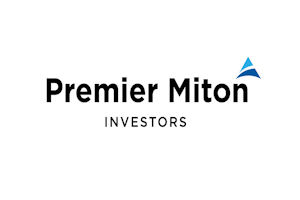After two years of roaring growth for thematic ETFs, a conservative outlook for monetary policy might prompt some investors to opt for a risk-off approach while others search for non-correlation in their favourite megatrends.
Thematic ETFs in Europe have developed rapidly over the past few years with the segment surging to $41bn assets under management (AUM) by the end of 2021, up from under $10bn at the end of 2019, as issuers rushed to fill out their thematic rosters during the tech boom of 2020 and the economic recovery of 2021.
Unfortunately, the wheels have come off in recent months highlighted by the posterchild of thematic ETFs, the ARK Investment Management range in the US, taking a hit. The flagship $13bn Ark Innovation ETF (ARKK) has shed $2.6bn assets over the last six months and returned -43% over past year, as at 17 January.
Growth-heavy ETFs such as ARKK have still booked monumental returns over the past five years, however, the climb down of tech high-fliers at the start of 2022 may only be the start of a longer trend as a forecast of three to five Federal Reserve rates hikes forces investors to temper the giddiness of the last year or so.
As we build-up to ETF Stream’s Big Call: Thematic ETFs event on 31 March, ETF Stream has selected five megatrends to outperform in 2022.
Infrastructure
Wearing the caps of both sector and thematic plays, infrastructure is heavily favoured given its tendency for lower volatility and its ability to benefit from a pro-cyclical environment.
As Dewi John, head of Lipper research, UK and Ireland, at Refinitiv, said: “With inflation trending sharply upwards, assets that shield against its corrosive effects look attractive.
“The cash flows of many [infrastructure projects] are inflation-linked, particularly those relating to regulated utilities. Where inflation rises faster than rates – what we are seeing now – infrastructure assets tend to do well.”
Morgane Delledonne, director of research at Global X, who have an ETF targeting US infrastructure, added: “The American Infrastructure and Job Plan, which totals $1.2trn spending in US infrastructure over the next five years, has already been signed into law last November, representing the most significant investment in infrastructure in the country’s history.
“Such spending will translate to revenues for companies involved in infrastructure development and that derive a significant share of their revenues from the US.”
ETFs offering a broad view of traditional infrastructure include the $1.5bn iShares Global Infrastructure UCITS ETF (INFR) and the $90m Global X U.S. Infrastructure Development UCITS ETF (PAVE).
Offering a more future thematic exposure to infrastructure, the $34m Digital Infrastructure and Connectivity UCITS ETF (DIGI) targets the expansion of digital network infrastructure such as 5G and data centres, which benefited from $65bn of new funding from the Biden administration last June.
Renewable energy utilities
Next is arguably the posterchild of thematic ETFs, clean energy, which saw explosive returns in 2020 but faced challenges amid the cyclical rotation at the start of last year.
The industry will continue to benefit from frequent and growing coverage in media and popular culture, as well as public policy and investment by governments and inter-governmental organisations.
Cosmo Elms, head of ETF business development at Legal & General Investment Management (LGIM), commented: “The current narrative around sustainability and climate change, as highlighted at COP26, continues to be supportive for clean energy and resources stocks.
“We believe this will continue to resonate in 2022 and beyond, as countries and companies around the globe work tirelessly to achieve net-zero emissions by 2050. By 2050, over $1.6trn to $3.8trn in new climate investment is required in the supply side of the global energy system according to the Intergovernmental Panel on Climate Change (IPCC).
“As well as the transition to renewable energy, energy storage and efficiency will continue to attract increasing attention. Ultimately it is medium and long term energy storage solutions, such as batteries and green hydrogen, as well as access to electricity grids, that will make renewable energy more attractive and reliable, in turn enabling its use across homes and industries globally.”
Despite the theme returning a mean average return of -11.2% in 2021, ETFs targeting clean energy ETFs have maintained impressive assets.
Some of the largest products addressing the theme inEurope include the $5bn iShares Global Clean Energy UCITS ETF (INRG) and the $126m L&G Clean Energy UCITS ETF (RENW).
Electric vehicles and battery tech
As referenced by LGIM’s Elms, battery technology is another area of interest in 2022, with this industry’s value chain ranging from resource extraction to energy storage, to EV manufacturing and retailing.
Also favouring the theme, Todd Rosenbluth, head of ETF and mutual fund research at CFRA, said electric vehicles will benefit from the $7.5bn of Federal Reserve spending on electric charging points “that is set to begin occurring”, he said.
According to Benchmark Mineral Intelligence, battery manufacturers and lithium miners have also benefited from EV sales surging 168% year-on-year in 2021, with units delivered in the growing Chinese market expected to exceed five million in 2022.
ETFs addressing this theme include the $1bn L&G Battery Value-Chain UCITS ETF (BATT) and the winner of the ‘Thematic ETF of the Year’ award at ETF Stream’sinaugural ETF awards in 2021, the $594m WisdomTree Battery Solutions UCITS ETF (VOLT).
Also receiving support was the adjacent sub-theme, future mobility, which focuses on EVs, metals mining, autonomous vehicles and innovation in freight transportation. Wayne Nutland, head of managed indexed solutions at Premier Miton, backed this theme for 2022 on the basis of its sector diversification, reasonable valuations, regulatory support and exposure to cyclical growth.
The largest ETF targeting future mobility is the $433m Lyxor MSCI Future Mobility ESG Filtered UCITS ETF (ELCR).
Clean water
Nutland also offered his vote of confidence for clean water which has continued to offer steady returns with relatively low volatility for a thematic ETF class.
He said high growth themes, especially those with a high proportion of loss-making companies, began underperforming in 2021. Even without the expected wave of interest rate rises from central banks, he warned such themes may continue to underperform as excessive momentum and valuations continue to unwind.
Explaining his support for clean water and future mobility, he continued: “These themes have more reasonable valuations and have regulatory support for longer term and hopefully more steady growth.
“As ever vehicle selection is important and we find that these themes can be accessed via vehicles which have good levels of sector diversification and exposure to cyclical growth which fits our current tactical positioning.”
Also, while many thematic classes rely on investors’ individual convictions and willingness to speculate on a theme’s prospects, the advantage with water is – like infrastructure – its use case is already well-established and it plays a key role in our everyday lives.
Remarking on the constant need to reinvest in water resources, Morningstar said: “Water risks, in their various forms, are pressing environmental, social, and governance challenges.
“Unlike fossil fuels, no alternatives to fresh water exist. As a result, our reliance on water poses not only critical challenges to the health of ecosystems but also to the operations of businesses, communities, and society.”
ETFs addressing this theme include the $2.8bn iShares Global Water UCITS ETF (IH2O) and the $346m L&G Clean Water UCITS ETF (GLUG).
Robotics
Offering perhaps more exposure to high-value growth stocks than some might be comfortable against a backdrop of monetary tightening, CFRA’s Rosenbluth suggested robotics might benefit from an issue blighting various parts of supply chains across the worlds.
“Robotics is also compelling as companies look for ways to gain efficiency with fewer employees given labour shortages,” Rosenbluth said.
Indeed, not only is factory output and port traffic in emerging economies still hampered by COVID-19 variants but staff shortages are keeping supermarket shelves empty in the US and in the UK, a study from the International Longevity Centre UK predicts the UK could face a labour shortage of 2.6m workers by 2030.
High valuations and anticipated higher costs of capital amid interest rate hikes saw the theme book some outflows following the publication of the Federal Reserve’s minutes at the start of January.
Regardless, the $3.9bn iShares Automation & Robotics UCITS ETF (RBOT) and $1.3bn L&G ROBO Global Robotics and Automation UCITS ETF (ROBO) still have impressive AUM.
Videogaming
To conclude, it is worth reflecting on one of the biggest losers in 2021, the video gaming industry.
The two ETFs already on the market, the $769m VanEck Vectors Video Gaming and eSports UCITS ETF (ESGB) and $32m Global X Video Games and Esports UCITS ETF (HERG), returned an average of -15.8% over the 12 months to 17 January.
Meanwhile, the FinEx Video Gaming and eSports UCITS ETF (FXES) launched in July last year and has since returned -10.4%.
However, despite disappointing performance in recent months, the index underlying ESGB, the MVIS Global Video Gaming & eSports index, has still returned 508% returns since its inception in 2015.
Furthermore, high valuations on information technology stocks and high costs of capital might mean this downward trend rolls on, but over time video gaming only stands to benefit from continued innovation within its theme. For instance, other fashionable megatrends – such as the metaverse and non-fungible tokens (NFTs) – only stand to benefit the theme through increased media coverage and sales of gaming hardware and in-game purchases.
Related articles












